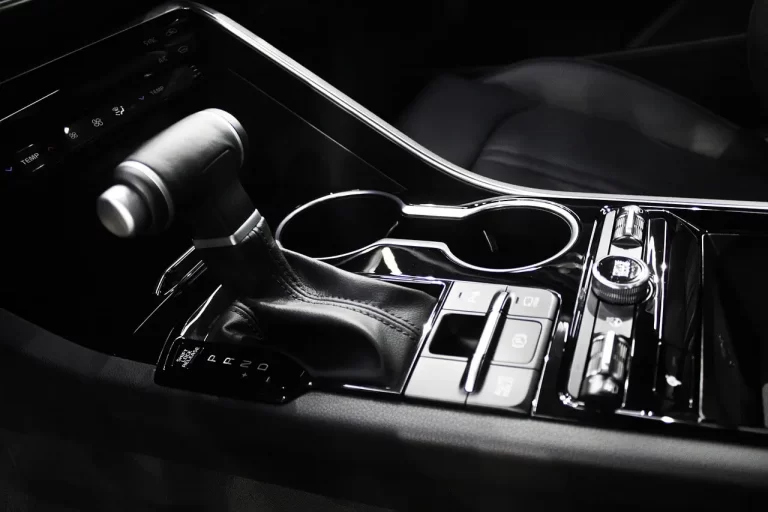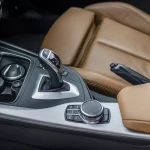You’re racing against time to get to an important meeting when you turn the key in your ignition and… nothing happens. Your car won’t start despite having a charged battery and fuel in the tank. The culprit? It might be your neutral safety switch. While this small component is designed to keep you safe, a faulty one can leave you stranded when you least expect it.
What Is a Neutral Safety Switch and Why Would You Need to Bypass It?
A neutral safety switch is a protective device in your vehicle that prevents the engine from starting unless the transmission is in park or neutral (for automatic transmissions) or the clutch is pressed (for manual transmissions). This safety feature stops your car from lurching forward if accidentally started in gear.
But there are several legitimate reasons you might need to bypass this switch temporarily:
- Diagnosing whether the switch is actually the problem
- Getting your vehicle to a repair shop when the switch fails
- Testing the starter or other components
- During certain transmission swaps or repairs
Let’s explore the different methods to bypass this switch while understanding the important safety considerations involved.
Locating Your Vehicle’s Neutral Safety Switch
Before attempting any bypass, you need to find where your switch is located. This varies by vehicle make and model:
Automatic Transmission Vehicles
In most automatic vehicles, the neutral safety switch is located in one of these places:
- Attached to the transmission shifter assembly
- Mounted directly on the transmission housing
- Integrated inside the transmission (common in newer vehicles)
- Within the steering column (older vehicles)
For example, in many Chevrolet models with a 4L60E transmission, the switch is internal to the transmission with an orange and black wire connected to the ECM (Engine Control Module) that grounds when the vehicle is in park or neutral.
Manual Transmission Vehicles
For manual transmission vehicles, you’ll typically find:
- A clutch safety switch near the clutch pedal
- Sometimes called a “clutch position sensor” in modern vehicles
Quick Location Guide by Vehicle Type
| Vehicle Type | Common NSS Location | Identifying Feature |
|---|---|---|
| GM/Chevy Automatic | Side of transmission | Orange/black wiring to ECM |
| Ford Automatic | Base of shifter/column | Usually has a multi-pin connector |
| Japanese Imports | At shifter assembly | Often has 2-3 wires |
| Manual Transmissions | Behind clutch pedal | Usually a simple 2-wire switch |
| Motorcycles | Near clutch lever or shifter | Single wire to ground |
Wire Jumping Method: The Most Common Bypass Technique
The wire jumping method is the most straightforward way to bypass a neutral safety switch. This method works by creating a direct electrical connection to trick the vehicle’s computer into thinking the transmission is in park or neutral.
Materials You’ll Need:
- Jumper wire (18-20 gauge insulated wire works well)
- Wire strippers
- Electrical tape
- Basic hand tools to access the switch
- Multimeter (optional but helpful)
Step-by-Step Process:
- Disconnect the battery – Always disconnect the negative terminal of your battery before working on electrical components.
- Locate the neutral safety switch connector – This may require removing panels or accessing the transmission.
- Identify the correct wires – In most vehicles, you’ll need to identify the power wire and the output wire. For example:
- In many Chevrolet vehicles, look for the orange and black wire that gets grounded when in park or neutral.
- For Ford vehicles, the neutral safety switch often has a yellow and black stripe wire that sends power to the starter relay.
- Test the wires (optional but recommended):
- Reconnect the battery temporarily
- Use a multimeter to identify which wire carries power and which is the output
- Set your multimeter to voltage and check which wire shows battery voltage when the key is turned to the start position
- Disconnect the battery again after testing
- Create the bypass:
- Cut a piece of wire long enough to reach between the two terminals
- Strip about 1/2 inch of insulation from each end
- Connect one end to the power wire terminal
- Connect the other end to the output wire terminal
- Secure with electrical tape
- Test your bypass:
- Reconnect the battery
- Make sure your vehicle is in park or neutral
- Turn the key to see if the vehicle starts
- If successful, consider your next steps:
- For temporary use, ensure the connections are secure
- For permanent solutions, properly replace the faulty switch
Rick, a mechanic from Indianapolis, shares: “I had a customer with a 2007 Silverado that wouldn’t start after sitting over the weekend. After testing, I found the neutral safety switch was faulty. We used the wire jumping technique just to get it to the shop, and then replaced the switch properly. Never leave a bypass as a permanent fix.”
Push Button Bypass: An Alternative Approach
If you’re facing persistent issues or need a more reliable temporary solution, installing a momentary push button can be effective.
Materials Needed:
- Momentary push button switch (normally open type)
- 14-16 gauge wire
- Wire connectors or solder
- Heat shrink tubing
- Drill (if mounting the button)
Installation Steps:
- Locate the starter solenoid wire – This is usually a relatively heavy gauge wire that runs from the ignition switch to the starter solenoid.
- Create a T-connection in the circuit:
- Cut the starter solenoid wire
- Connect both ends to one terminal of your push button
- Connect a new wire from the other terminal of the push button to the starter
- Mount the button in an accessible location (if this is more than a one-time fix).
- To start the vehicle:
- Turn the key to the “ON” position
- Press and hold the button until the engine starts
- Release the button once the engine is running
This method essentially creates a parallel path for current to reach the starter solenoid, bypassing the neutral safety switch entirely. It’s particularly useful for situations like transmission swaps where the original switch configuration has changed.
Grounding Method: Simplest Solution for Some Vehicles
For some vehicles, especially motorcycles and certain older models, the neutral safety switch works by creating a ground connection when in the neutral position. In these cases, a simpler bypass is possible.
How to Use the Grounding Method:
- Locate the neutral safety switch wire – This will typically be a single wire that grounds to the frame when the transmission is in neutral.
- Create a direct ground connection:
- Connect the neutral switch wire to any metal part of the frame or engine
- Use an alligator clip for temporary testing or a more permanent connection if needed
- Test the connection by attempting to start the vehicle.
This method works well with motorcycles like the VTX 1300, where simply grounding the neutral switch wire can help determine if the switch itself is the problem.
Vehicle-Specific Bypass Techniques
Different vehicles require slightly different approaches based on their transmission type and electrical system design.
For Automatic Transmission Vehicles
Modern automatic transmission vehicles often use the neutral safety switch not only as a safety feature but also to provide gear position information to the vehicle’s computer. This makes bypassing more complex.
Example: GM 4L60E to 4L80E Transmission Swap
When swapping from a 4L60E transmission with an internal neutral safety switch to a 4L80E with a manual valve body, you must account for the ECM monitoring these connections. Simply grounding certain circuits may trigger fault codes.
Specific Steps:
- Identify the orange and black wire that normally grounds when in park/neutral
- Create a switched ground circuit that mimics the behavior of the original NSS
- Consider using a microswitch activated by the shifter position
For Manual Transmission Vehicles
Manual transmission vehicles typically use a clutch safety switch rather than a transmission-mounted neutral safety switch.
Bypass Method:
- Locate the clutch pedal safety switch (usually near the top of the pedal assembly)
- Identify the two wires connected to the switch
- Connect these wires with a jumper to simulate a closed circuit (as if the clutch were depressed)
- Some enthusiasts report using a simple paperclip for this purpose
For Motorcycles
Motorcycles present a simpler scenario for neutral safety switch bypassing due to their less complex electrical systems.
Simple Motorcycle Bypass:
- Find the neutral switch wire (often a green or blue single wire)
- Connect this wire directly to a ground point on the frame
- For testing purposes, using an alligator clip allows easy removal
As one rider discovered with their VTX 1300, this can help determine if the neutral indicator light failure is due to a switch problem before purchasing replacement parts.
Important Safety Considerations Before Bypassing
While bypassing a neutral safety switch may be necessary in some situations, there are significant safety concerns you should understand:
The Real Dangers of Bypassing Safety Features
Bypassing a neutral safety switch removes an important safety feature designed to prevent accidental vehicle movement during starting. This is particularly dangerous if:
- The vehicle is left in gear
- The parking brake isn’t applied
- Children or inexperienced drivers have access to the vehicle
As one mechanic explained regarding a 350Z, the clutch safety switch isn’t just about preventing stalling—it prevents moving the car forward with the starter motor. Without this safety feature:
- A vehicle started in gear could lurch forward unexpectedly
- Property damage, injuries, or even fatalities could result
- You become liable for any accidents that occur
Electrical System Impacts
Modern vehicles have complex electrical systems where components communicate with each other. Bypassing the neutral safety switch can have unintended consequences:
- May trigger fault codes in the ECM
- Could affect transmission shift quality
- Might interfere with other safety systems
- Improper connections could damage sensitive electronics
In vehicles where the NSS communicates gear position to the ECM, permanently grounding the circuit can trigger fault codes as the computer expects to see changes in this signal when shifting gears.
Legal and Insurance Implications
Modifying safety systems may have serious legal and insurance ramifications:
- Vehicle safety features are often required by law
- Tampering with them might violate local vehicle codes
- Insurance companies may deny claims based on unauthorized modifications
- You could be held liable in case of accidents
A mechanic from Detroit warns: “I’ve seen insurance companies deny claims when they discover safety bypasses. What seems like a simple fix can turn into a financial nightmare if something goes wrong.”
Better Alternatives to Permanent Bypassing
Rather than permanently bypassing your neutral safety switch, consider these safer alternatives:
Replacing the Faulty Switch
The safest long-term solution is replacing the defective switch. While replacement parts and labor might seem expensive—quotes for starter-related repairs can run around $400—these costs should be weighed against:
- Safety benefits
- Potential liability of operating without proper safety systems
- Peace of mind knowing your vehicle functions as designed
For many vehicles, replacement switches are readily available and can be installed by a qualified mechanic or even as a DIY project with the right tools and knowledge.
Temporary vs. Permanent Solutions
Distinguish between emergency measures and long-term fixes:
Temporary Emergency Bypass:
- Use jumper wires or clips that can be easily removed
- Only employ when necessary to move the vehicle
- Remove once you’ve reached a safe location or repair shop
Permanent Solutions:
- Properly diagnose the root cause
- Replace faulty components
- Restore the vehicle to factory specifications
Professional Diagnosis and Repair
While DIY solutions may be tempting, professional diagnosis offers significant advantages:
- Proper diagnostic equipment to identify the real issue
- Expertise to distinguish between similar symptoms
- Access to specialized tools for proper repairs
- Knowledge of vehicle-specific quirks and common failures
For example, in the case of a 2006 Saab 9-5 that wouldn’t start, what initially seemed like a neutral safety switch issue was actually related to the starter, battery, or relay.
Troubleshooting Tips Before Bypassing
Before attempting any bypass, try these troubleshooting steps to confirm the neutral safety switch is actually the problem:
Check for Common Symptoms
These signs often point to a failing neutral safety switch:
- Engine cranks only in certain gear positions
- Intermittent starting problems
- Need to wiggle the shifter to get the car to start
- Starter engages but only occasionally
- Engine won’t crank despite having power elsewhere in the vehicle
Simple Tests You Can Perform
For automatic transmissions:
- Try starting in neutral if it won’t start in park
- Try shifting slightly between park and reverse while turning the key
- Check if the reverse lights work (often shares circuitry with NSS)
For manual transmissions:
- Try holding the clutch at different positions while starting
- Check if the brake lights work (separate circuit but similar switch technology)
- Inspect the clutch pedal for proper free play
When Bypassing Makes Sense
Bypassing makes the most sense when:
- You’re stranded and need to get to a repair facility
- You’re actively diagnosing electrical issues
- You’re performing a transmission modification or swap
- The vehicle is used in a controlled environment (like a farm or private property)
Real-World Examples and Case Studies
Case Study 1: 2007 Chevrolet Silverado
A 2007 Silverado owner on Reddit described how their truck would intermittently fail to start. After diagnosing the issue as a failing internal neutral safety switch in the 4L60E transmission, they created a temporary bypass by jumping the orange and black wire to ground. This allowed them to drive to a repair shop where they eventually replaced the entire PRNDL switch assembly.
Case Study 2: Motorcycle Starting Issues
A VTX 1300 rider discovered their motorcycle wouldn’t start despite being in neutral. By using a simple grounding wire connected to the neutral safety switch wire, they determined the switch itself was faulty. This temporary bypass allowed them to confirm the diagnosis before purchasing and installing a replacement switch.
Case Study 3: Manual Transmission Conversion
During a manual transmission conversion on a 3000GT, an enthusiast found that the vehicle’s computer still expected signals from the now-removed automatic transmission’s neutral safety switch. By understanding the wiring diagram and creating a properly designed bypass circuit that mimicked the original signals, they were able to complete the conversion without triggering check engine lights.
Conclusion: Making an Informed Decision
Knowing how to bypass a neutral safety switch can be valuable knowledge in emergency situations. The wire jumping method, push button installation, or simple grounding technique can get you out of a bind when your vehicle won’t start due to a faulty switch.
However, these bypasses should be viewed as temporary measures, not permanent solutions. The neutral safety switch exists for important safety reasons—preventing unexpected vehicle movement that could cause accidents or injuries.
When faced with a neutral safety switch issue:
- Properly diagnose the problem to confirm the switch is actually faulty
- Use a bypass technique only when necessary to move the vehicle to safety or a repair facility
- Plan for proper replacement of the defective components
- Consider professional help for complex electrical issues
By understanding both the methods to bypass a neutral safety switch and the important safety considerations involved, you can make informed decisions about your vehicle’s repair needs while minimizing risks to yourself and others.



